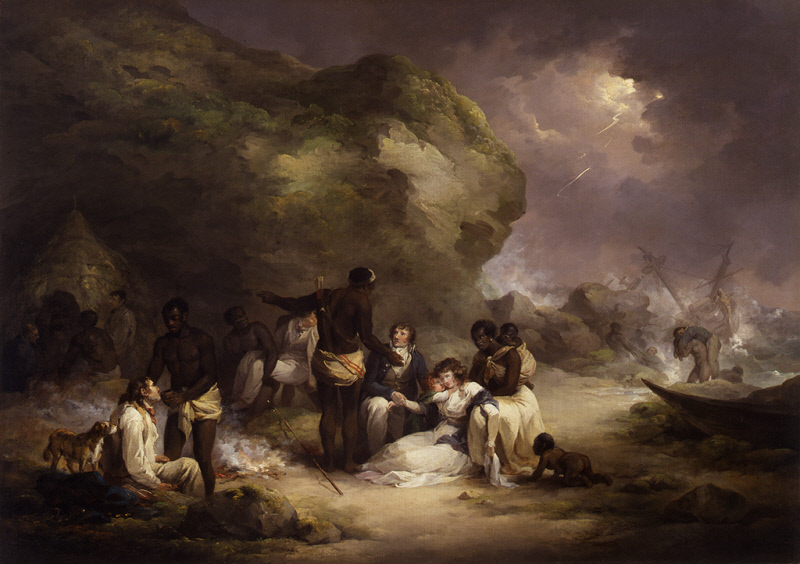George Morland, English, 1763 - 1804
European Ship Wrecked on the Coast of Africa, known as African Hospitality, 1788-1790
Oil on canvas
34 ¼ × 48 1/8 in. (87 × 122.2 cm)
Painting
1982-13 DJ
Learn More
In the mid-17th century, British merchants and ship owners emerged as major participants in the transatlantic slave trade, forcibly transporting enslaved Africans to labor in European colonies in the Americas. Remarkably, by the late 18th century, England had become the world’s leading opponent of slavery. Descriptions and illustrations of the brutal form that slavery took in the New World— particularly of the horrific conditions onboard British-owned slave ships—circulated widely, spurring an abolitionist movement with unprecedented popular support. The first painter to publicly exhibit abolitionist imagery in Great Britain was George Morland, who in 1788 entered the canvas Execrable Human Traffick at the Society of the Artists in London. Two years later, he exhibited this pendant piece titled European Ship Wrecked on the Coast of Africa, known as African Hospitality. The imagery was inspired by “The Slave Trade: A Poem Written in the Year 1788,” by Morland’s friend William Collins. The poem recounts the purportedly true tale of a European vessel that wrecked off the coast of South Africa and the compassionate treatment its survivors received at the hands of the native Africans. Morland’s depiction of Black protagonists as not merely deserving of pity, but as capable and sympathetic providers to those in need, was radical for its time. In 1791 African Hospitality, along with its companion piece, was published as an engraving, expanding its reception beyond the small and primarily upper-class audience of the Royal Academy.

